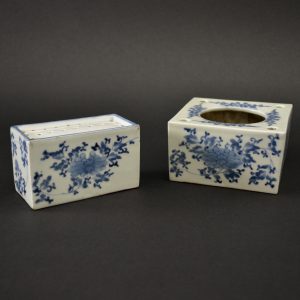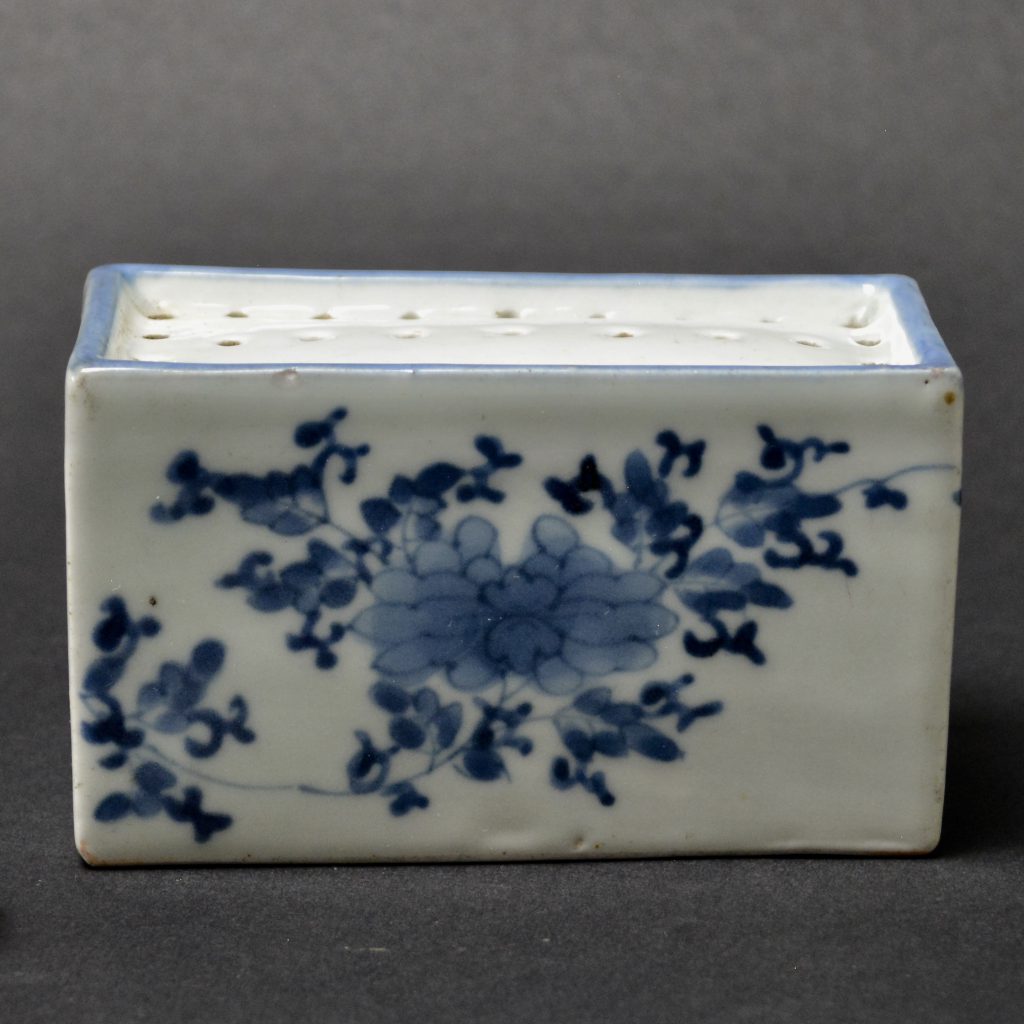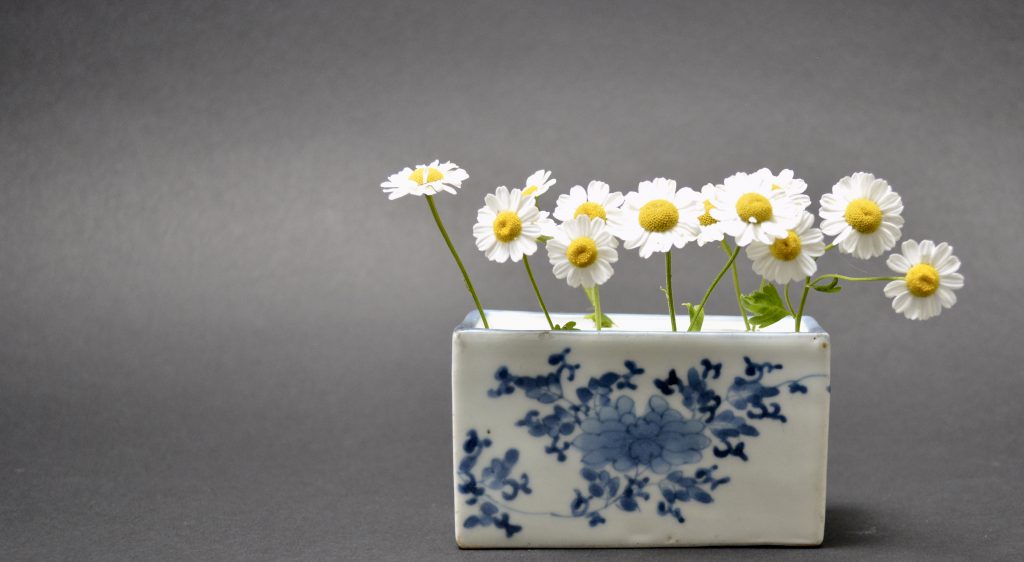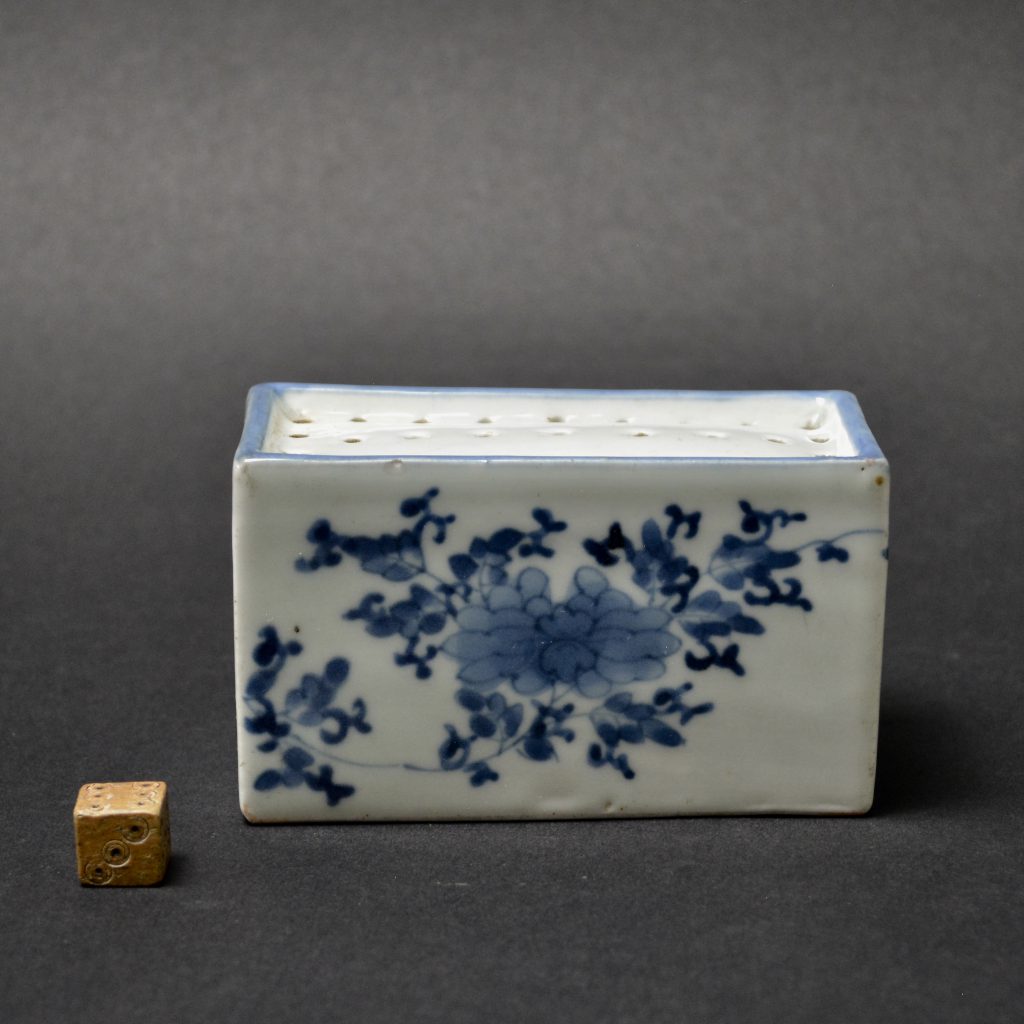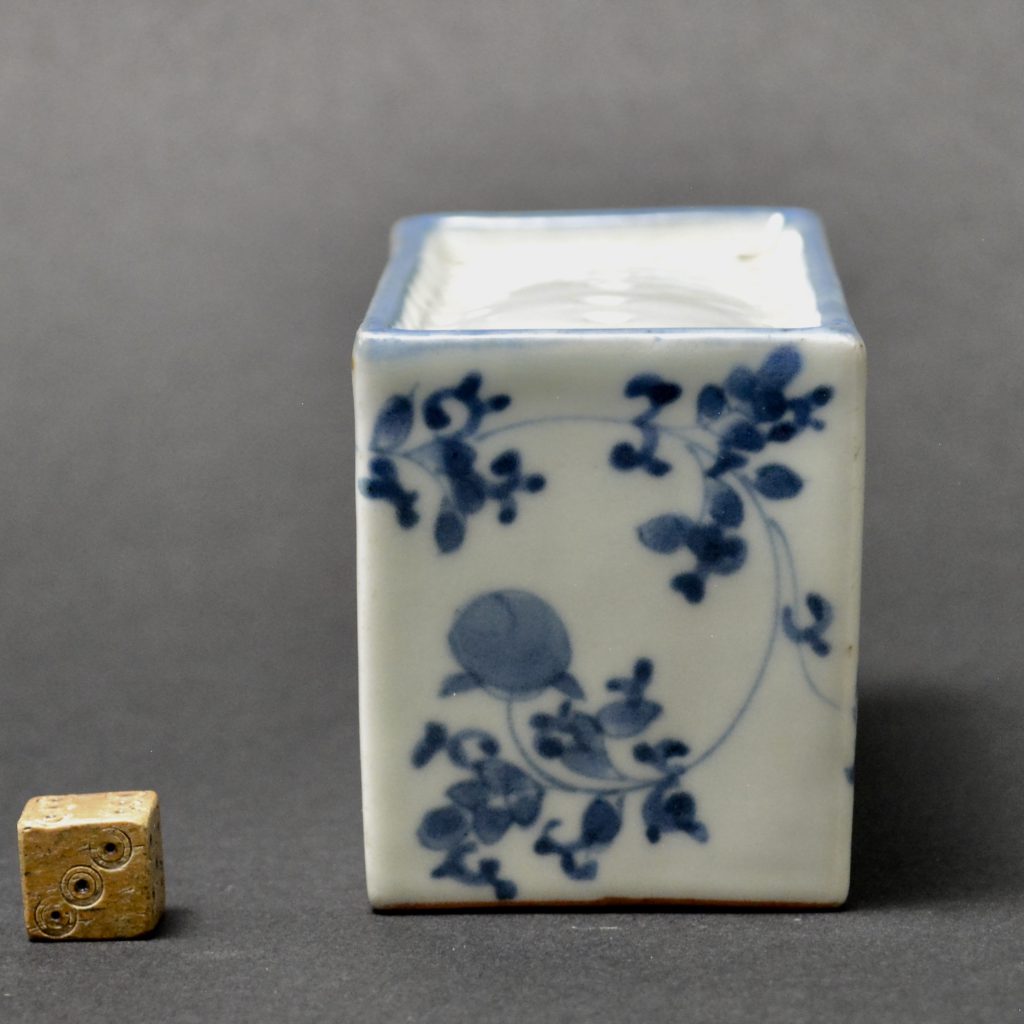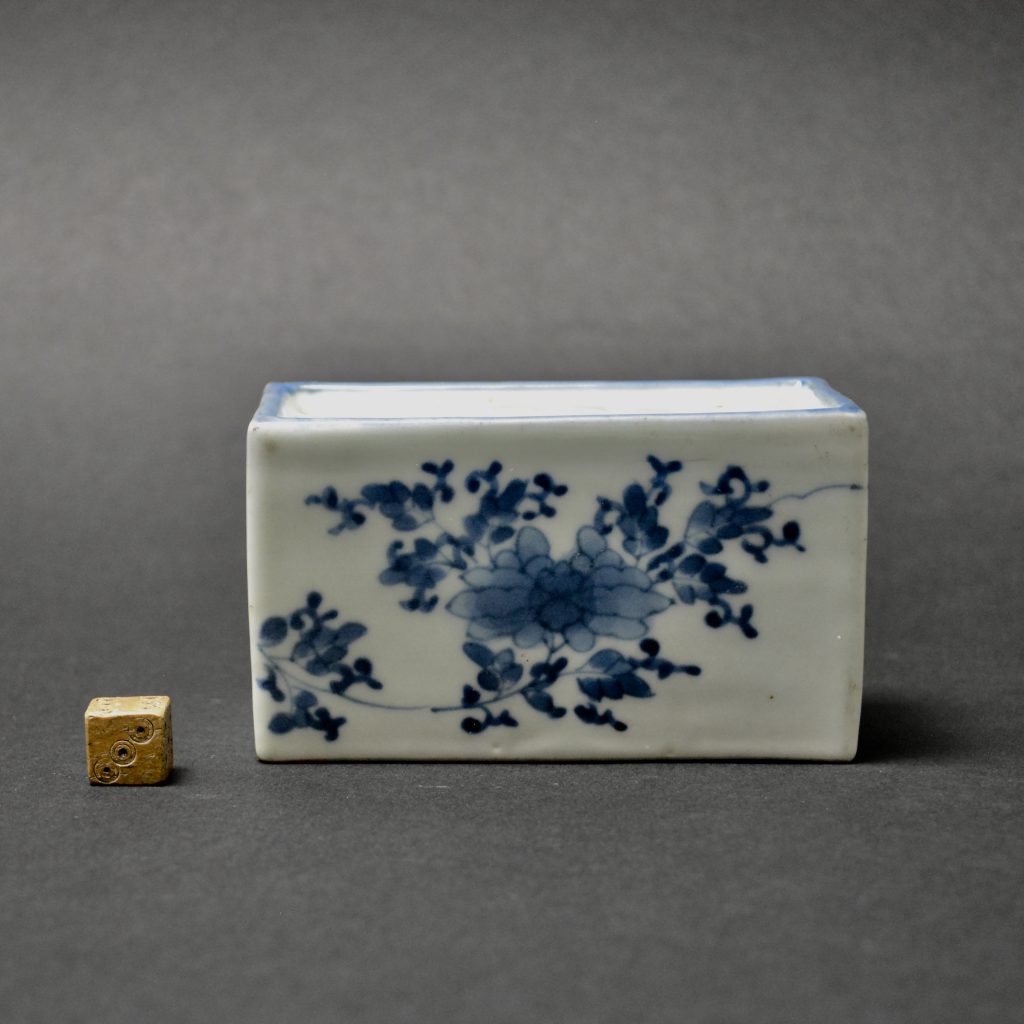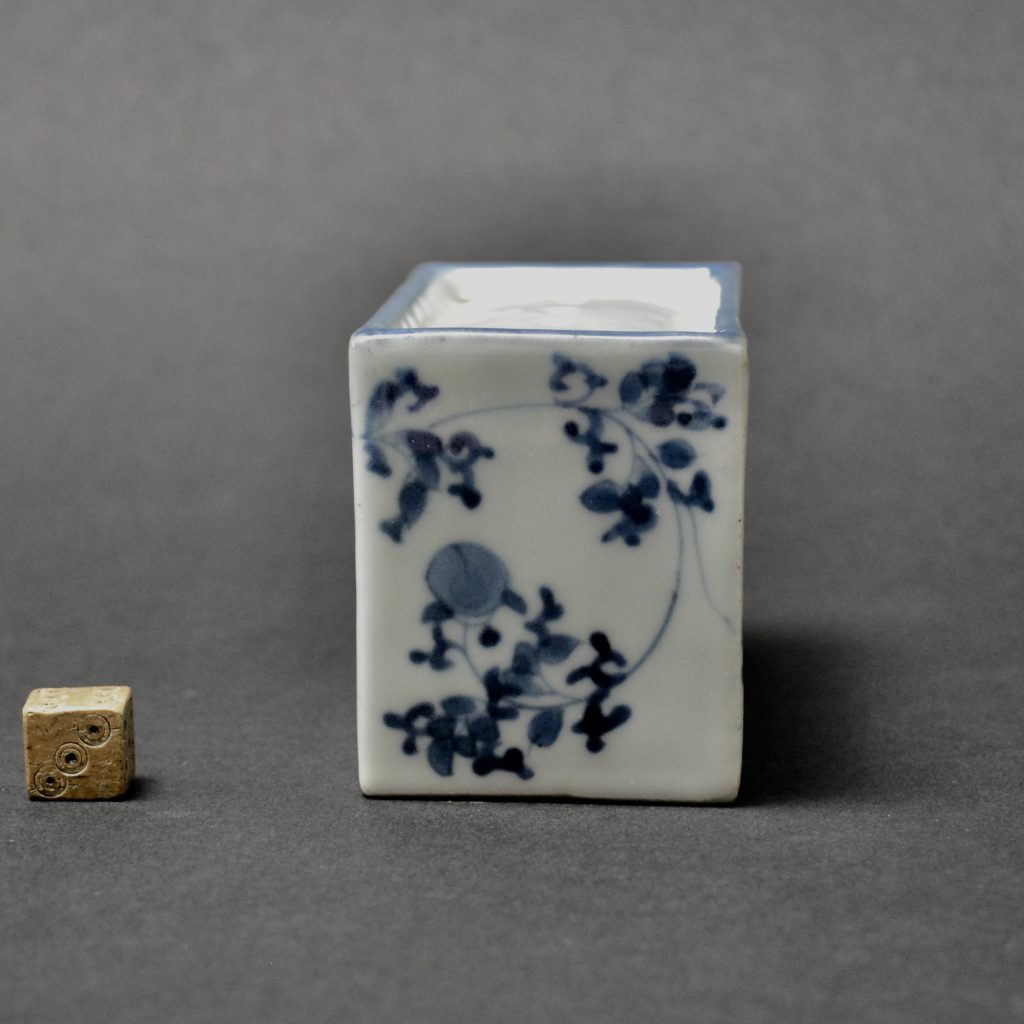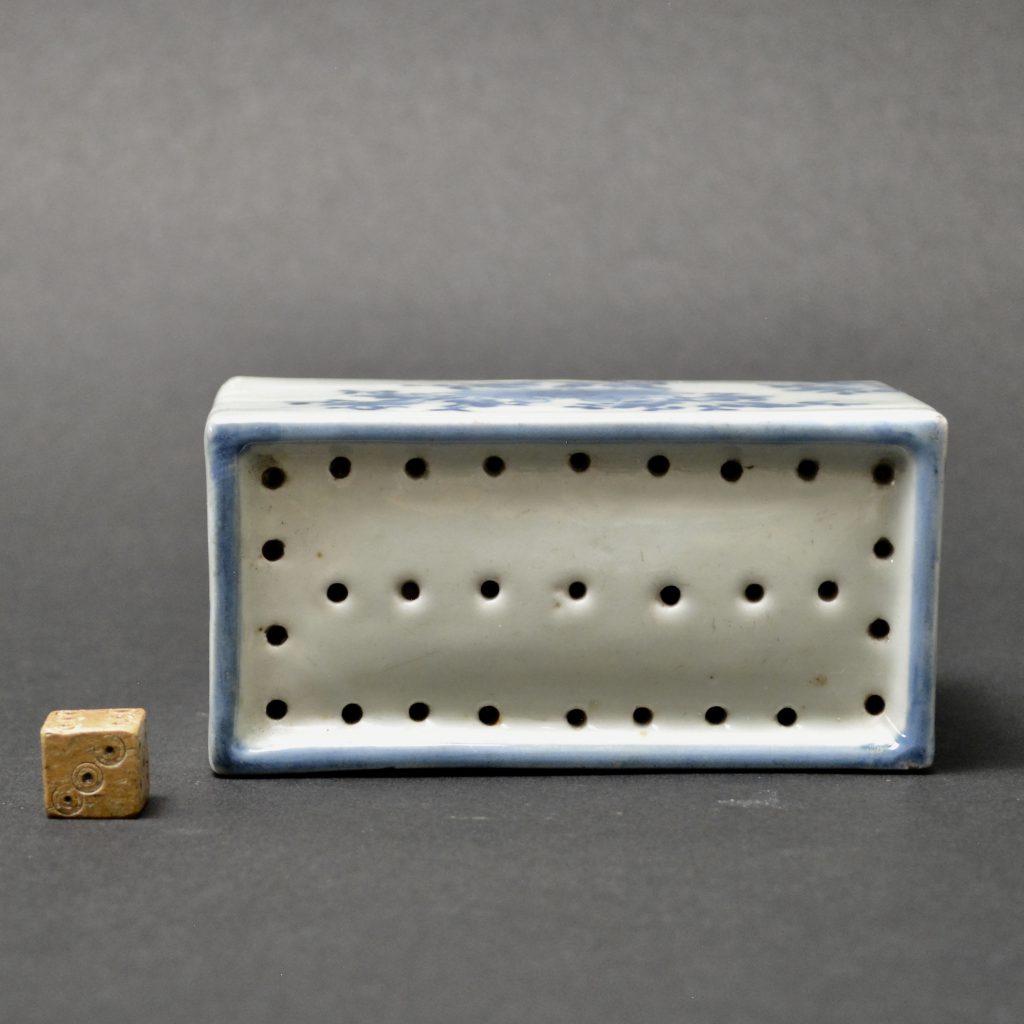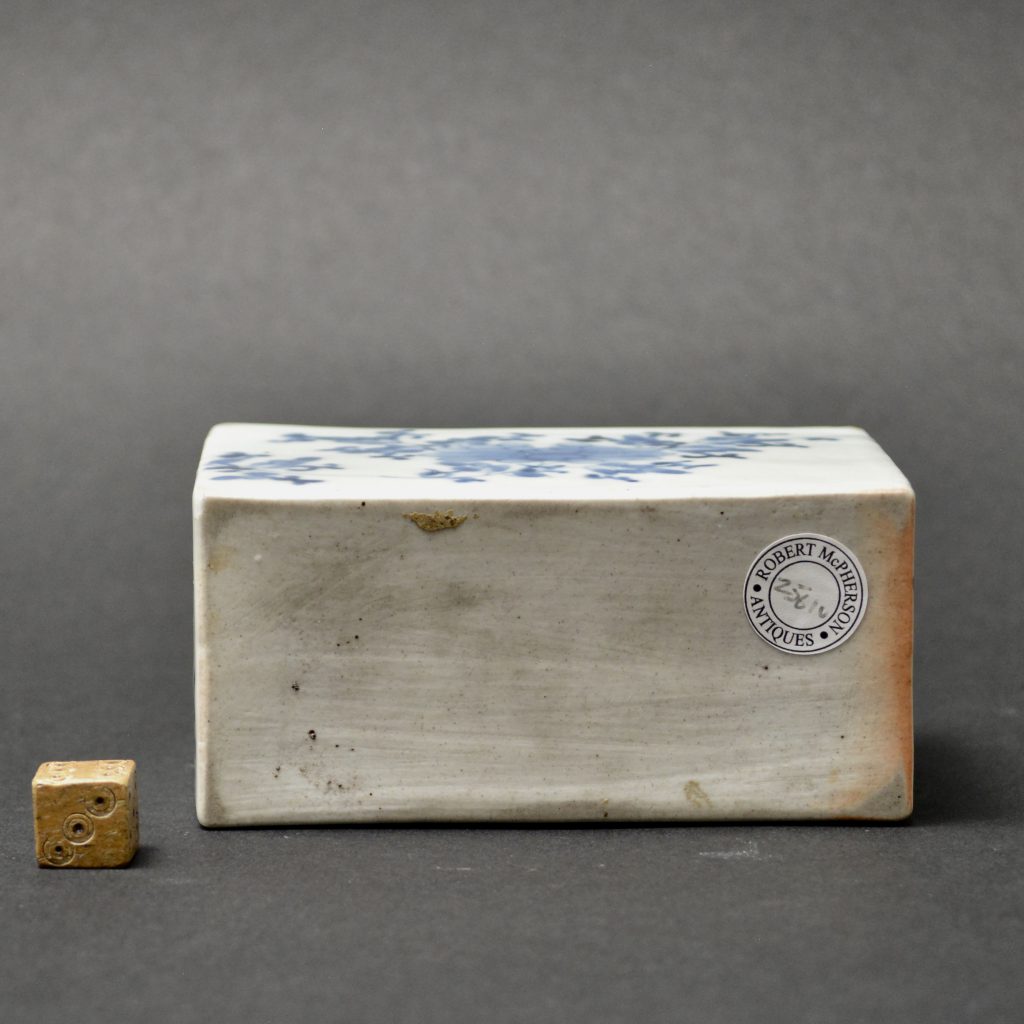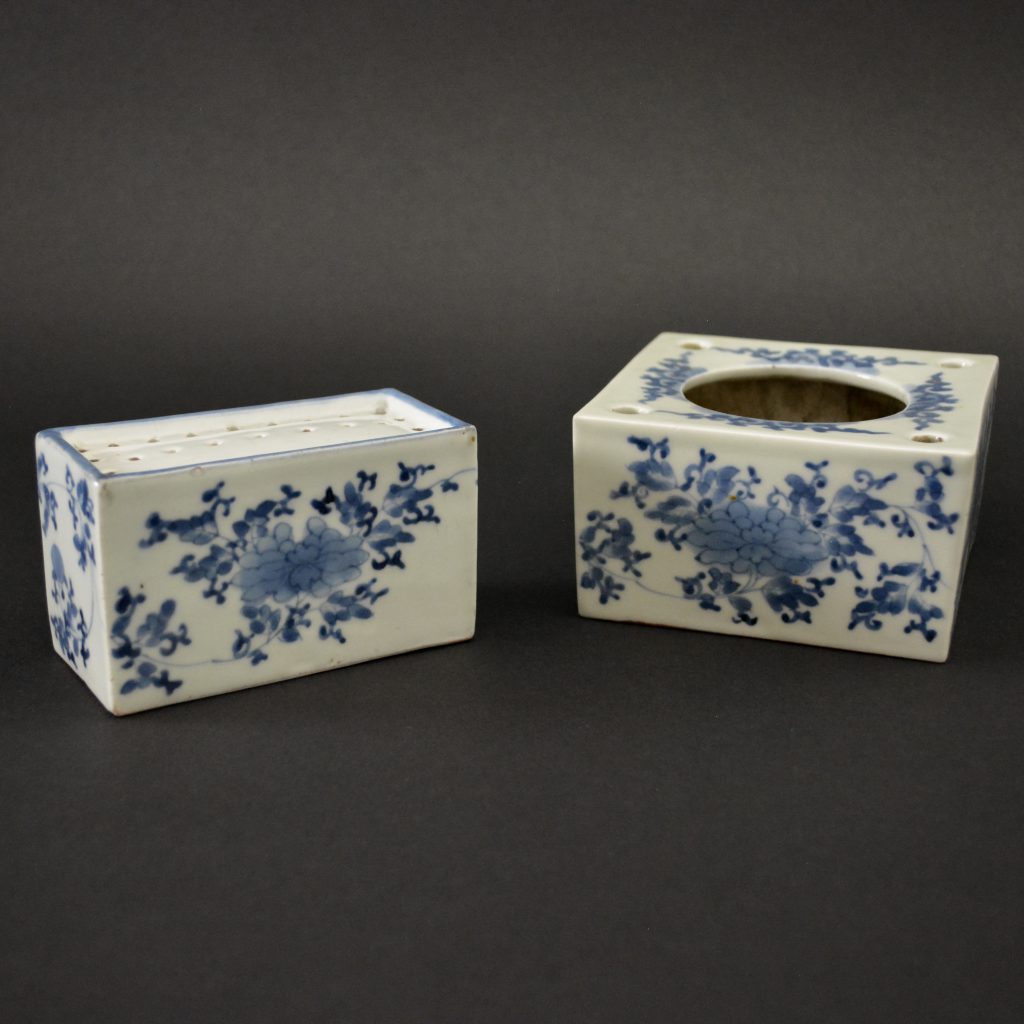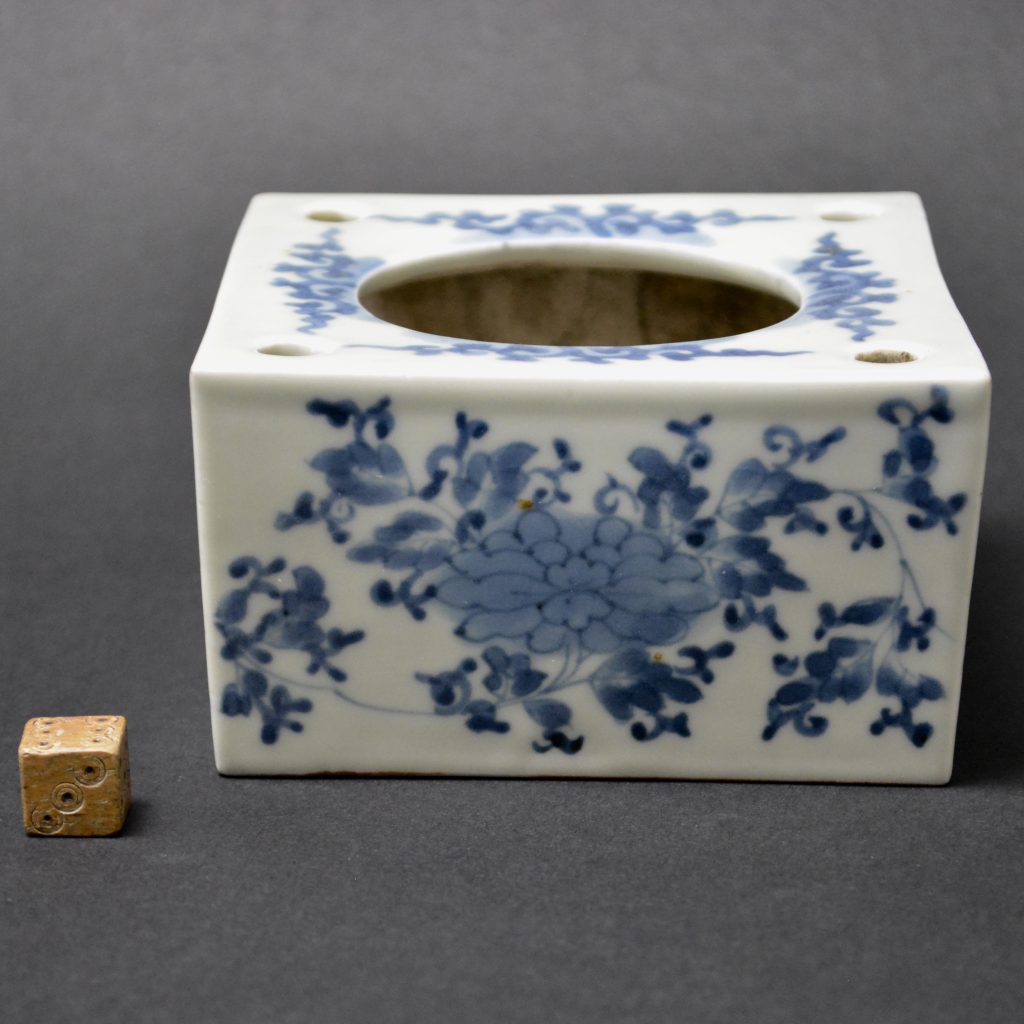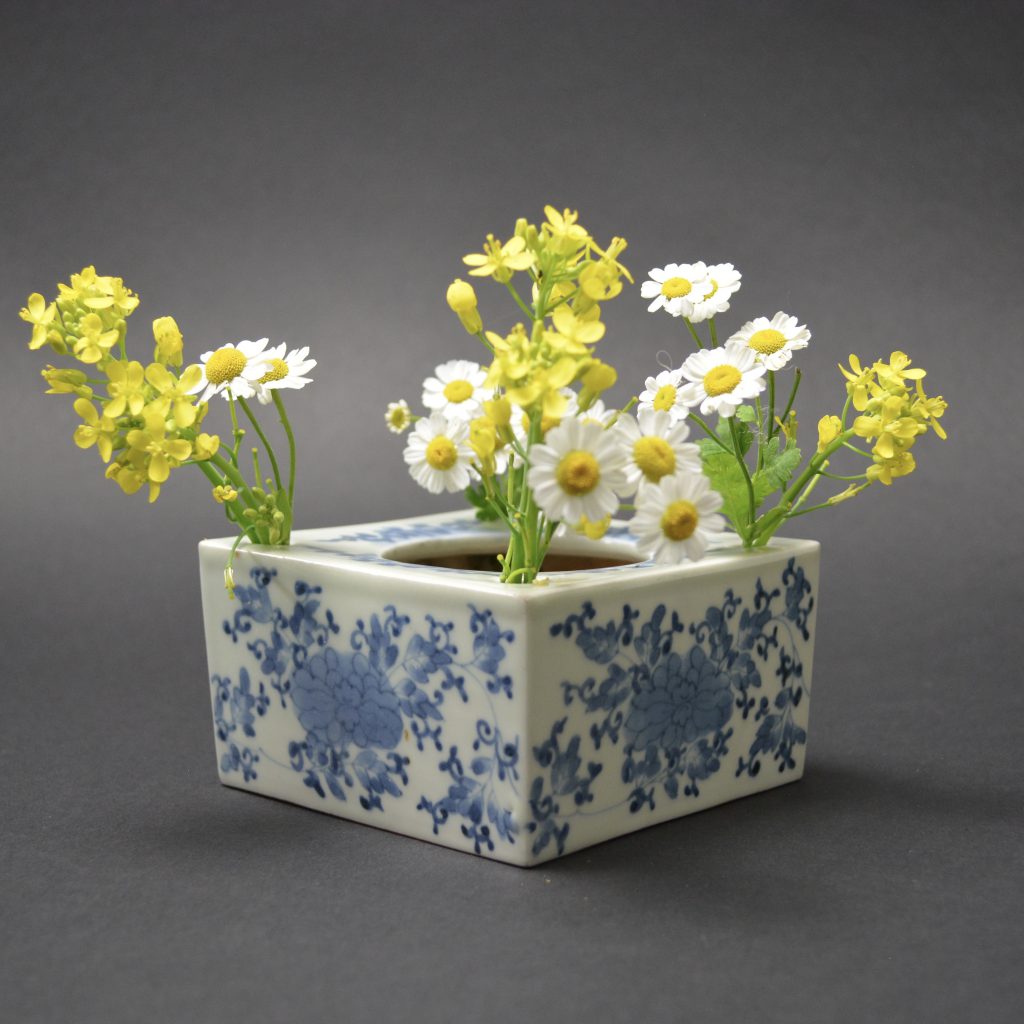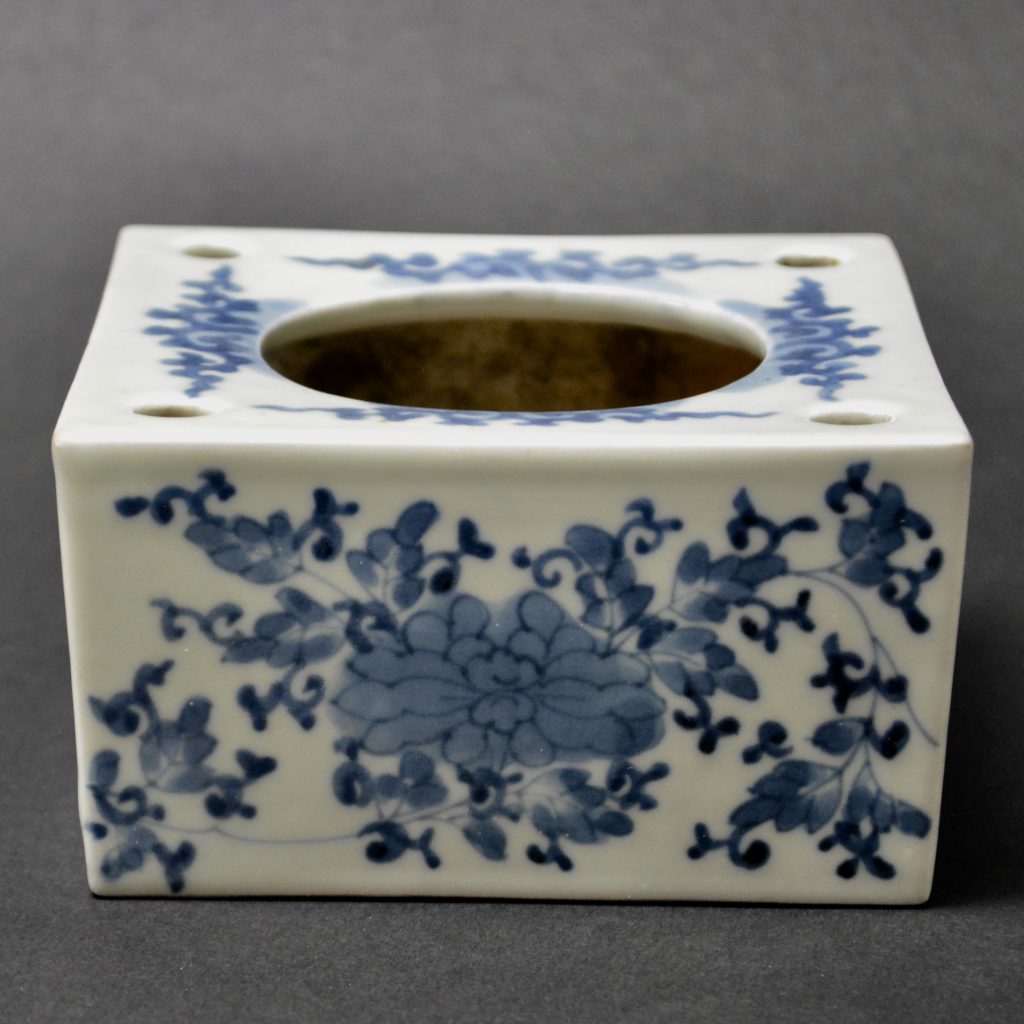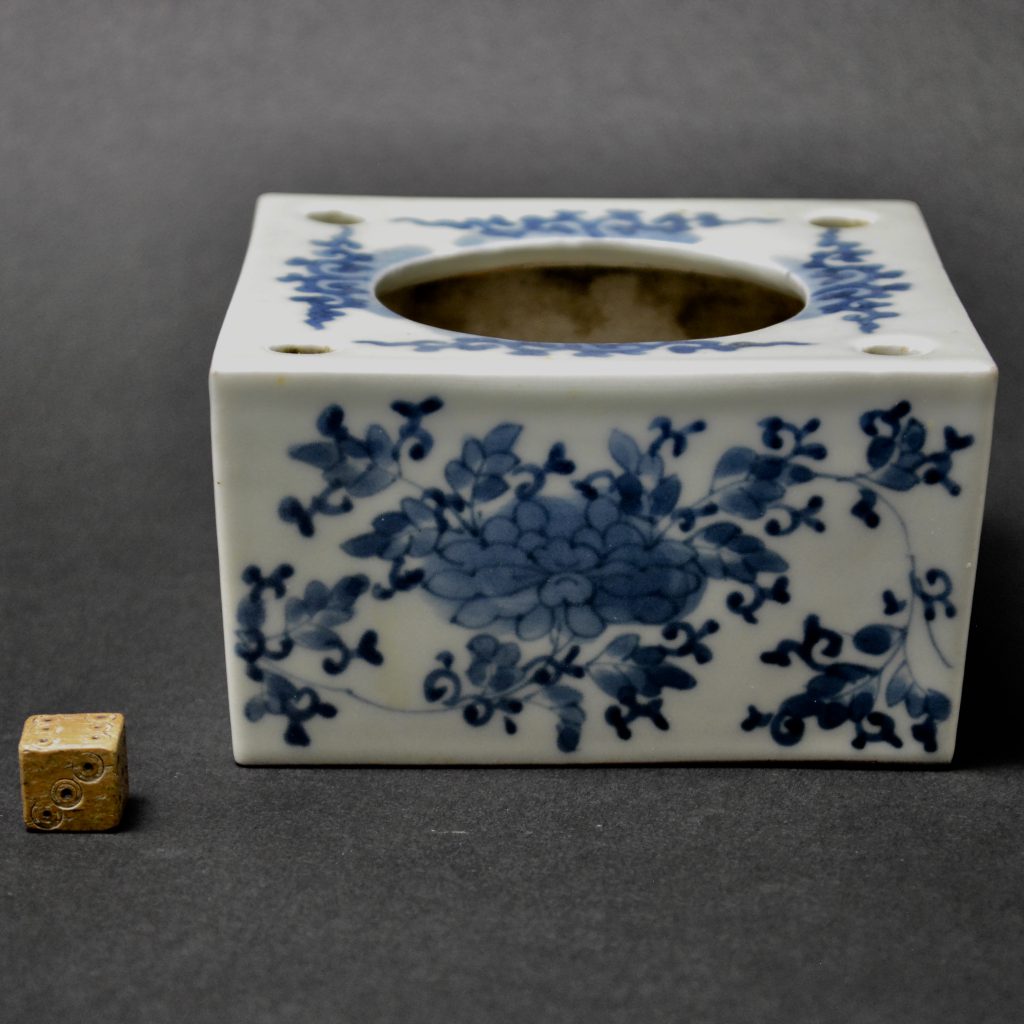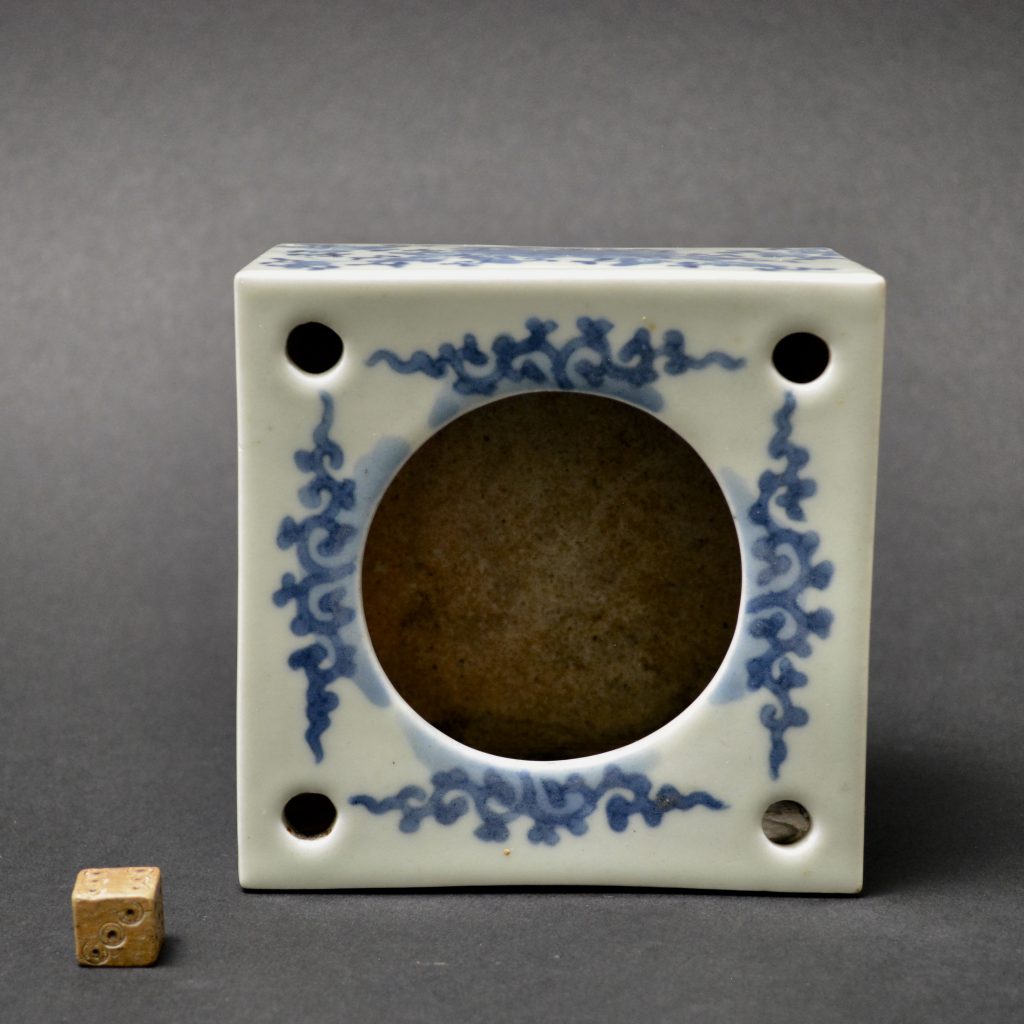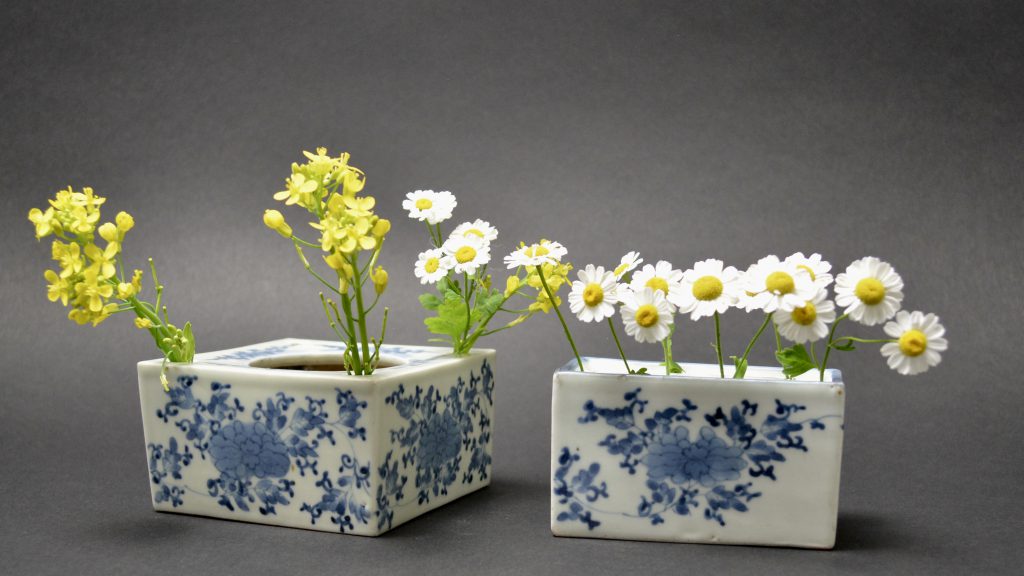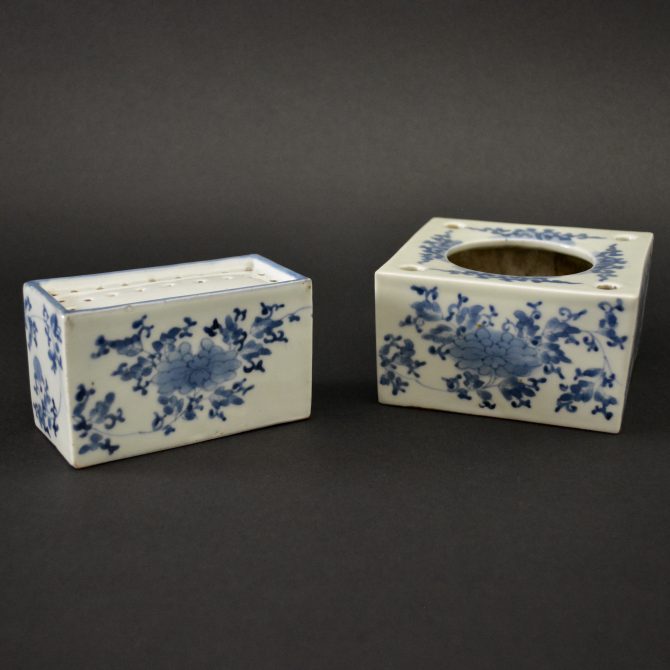
A 17th Century Japanese Porcelain Writing Set
An Unusual 17th Century Japanese Porcelain Writing Set, Arita kilns c.1680-1700. This blue and white Japanese export porcelain set is comprised of a square ink pot with space for four quills (cover missing) and a rectangular sand brick. The decoration consists of flowering peony and peony Karakusa scrolls. The glaze is of a blue-green tint.
SOLD
- Condition
- Sand brick - in very good condition, small glaze chip under the top edge and a very shallow glaze chip to the edge. Ink pot - cover lacking.
- Size
- Sand brick - length 9.7 cm (3 3/4 inches). The Ink pot - Diameter 10 cm (4 inches)
- Provenance
- N/A
- Stock number
- 25610 25629
- References
- For a very similar Japanese porcelain sand brick see : Fine and Curious, Japanese Export Porcelain in Dutch Collections (Christian J.A. Jorg, Hotei Publishing, 2003. ISBN 90-74822-16-9) Page 187, plate 235. A similar Japanese porcelain ink pot is illustrated in : Complete Catalogue of Shibata Collection (Kyushu Ceramic Museum,2003) page 122, item 916. This is dated to c.1655-1690.
Information
Japanese Porcelain Writing Sets
The Chinese did not make porcelain writing sets like the present example, later ones are known but these Qianlong versions are quite different and come with a fitted stand. Japanese export porcelain sets, so-called intkokers (inkstands) were shipped to the Netherlands from the very beginning of the V.O.C.'s trade with Japan - "de Verenigde Oost Indische Compagnie" (The Dutch United East Indies Company)
Later sets, such as the present example, comprised a flat square ink pot and cover as well as a sand brick. A rare Kakiemon porcelain set is in the Grongingen Museum and is illustrated by Jörg (see below), others are known in blue and white as well as the imari palette. These Japanese export porcelain sets were of course based on a European prototype, such as metal and pottery. Writing in the west required a quill pen, the iron-gall ink dried slowly, so powder was needed to stop the smudging of the ink. Old household manuals indicate that ink-making was often one of the domestic duties of women. Recipes were also passed from one generation to the next. In contrast to this individualized approach is the strict formulation of ink used in the administration of the seventeenth century trade company the V.O.C. (The Dutch United East Indies Company).
17th Century Japanese porcelain ink sets are uncommon, these were items that were expensive and so made in relatively small numbers. See 'Fine and Curious, Japanese Export Porcelain in Dutch Collections' (Christian J.A. Jörg, Hotei Publishing, 2003. ISBN 90-74822-16-9) pages 188-189.
